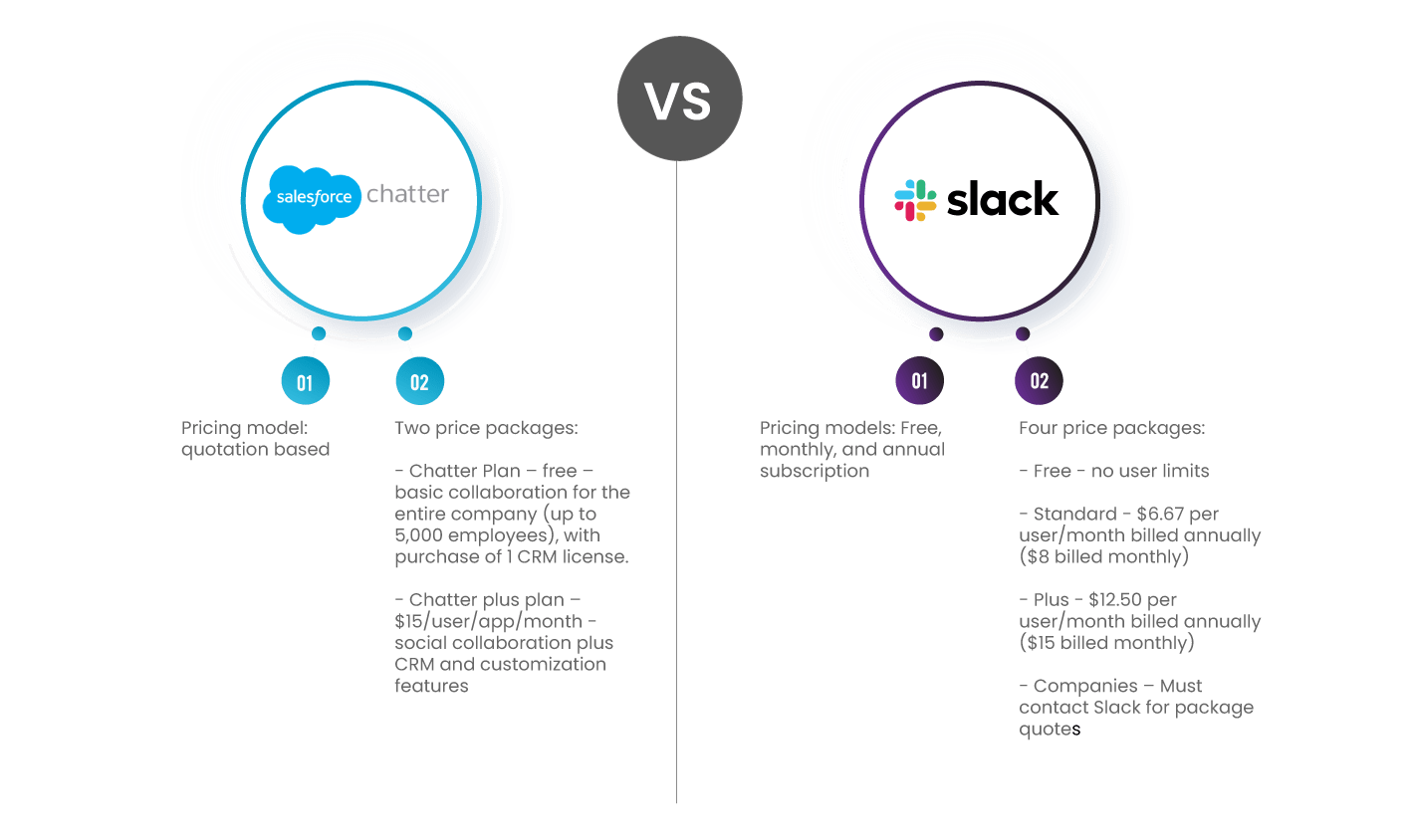As part of its strategic acquisition policy, Salesforce surprised the world with the billion-dollar acquisition of Slack Technologies Inc. In the words of Marc Benioff, President and CEO of Salesforce, “Together we’ll define the future of enterprise software, creating the digital HQ that enables every organization to deliver customer and employee success from anywhere”.
However, with this acquisition, one question was left unanswered: what is the future of Chatter for the Salesforce platform and its customers? Until now, Chatter was the enterprise collaboration software for the CRM. So why would billions be spent on Slack, a tool with similar functionality to Chatter? Below, we highlight several points to help you understand this decision by Salesforce.
Asynchronous Communication vs. Real-time Communication
Chatter is more than a collaborative tool, it is an internal Salesforce communication and notification tool. It is asynchronous by nature, as its greatest strength is the ability to share information within the CRM’s own records. Its fundamental support is email, which makes it more functional for one-to-many communications, but not for conversational collaboration. Slack, on the other hand, operates in real time and relies heavily on users being online. In addition, it allows you to create private or group channels, as well as attach voice notes, videos and other files. Users of paid plans can meet using Huddle, a feature of Slack with many potentialities. With this, you can have an informal discussion or meeting by voice communication, just like in the office. Groups can have up to 50 participants and have the option to share screens and enable live captions.
Modalities of prices and accessibility

Chatter vs Slack, who uses them?
Chatter was developed primarily to be used by sales, marketing, service teams, as well as general project collaboration. Also, it works only within the Salesforce ecosystem and its users. This means if the entire company isn’t linked to the CRM, it’s considerably laborious to bring people from other teams on board and achieve effective collaboration. Even for exclusive Chatter members, the functionality is extremely limited and they still have to work through a Salesforce user interface. In contrast, Slack is generally adopted by the entire company. This is key for business collaboration, as no matter what your team is, any worker can have a productive and rewarding experience using this platform.
Integration
Slack was designed for easy integration with other systems and is backed by over 1,500 built-in apps with a robust set of APIs for creating custom connectors. In contrast, Chatter has a very limited set of connectors, as it was designed to be used within the Salesforce ecosystem.
Mobile versions
Chatter doesn’t have a good reputation on its mobile interface while Slack works seamlessly on any smart device and provides one of the best user experiences on the market. With Slack mobile, you can do just about anything you’d expect with your web or desktop apps. This functionality enhances real-time communication, since it is useful to start a conversation with a client on the move, during field work, or remotely.
With an eye to the future and given its respective features and potential, Slack has the makings to become Salesforce’s new collaborative participation and interaction software of choice.



